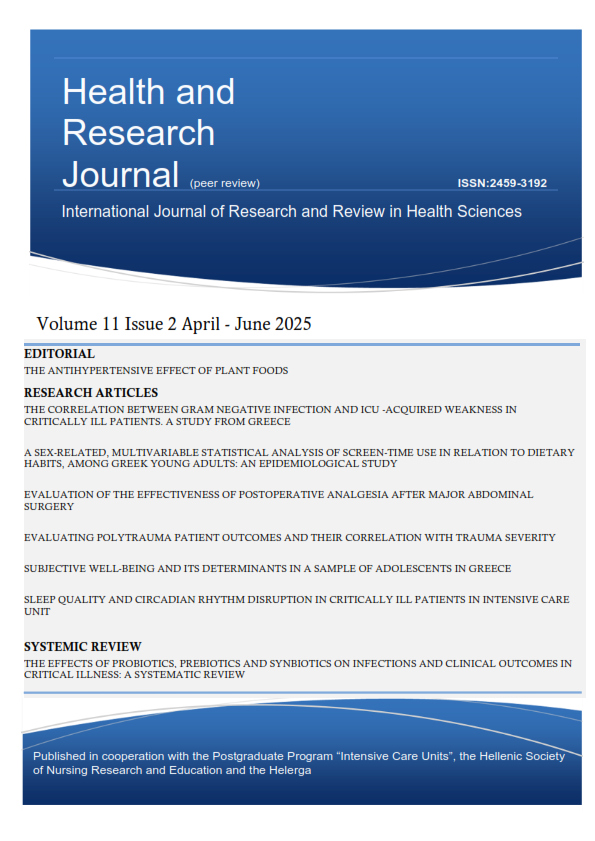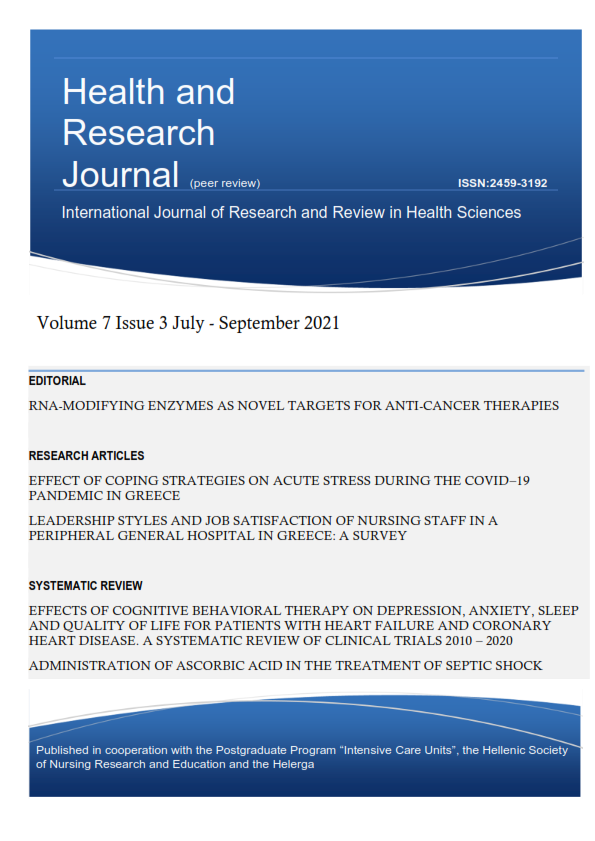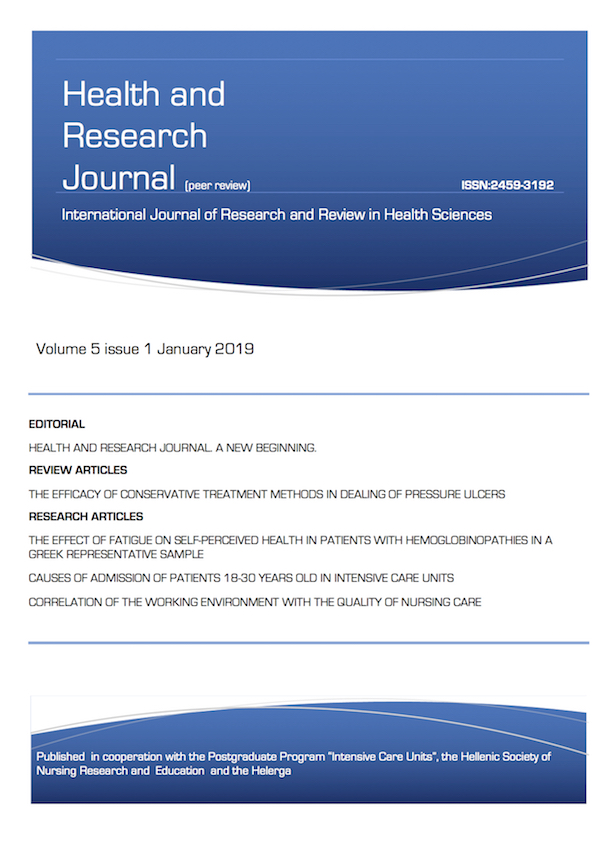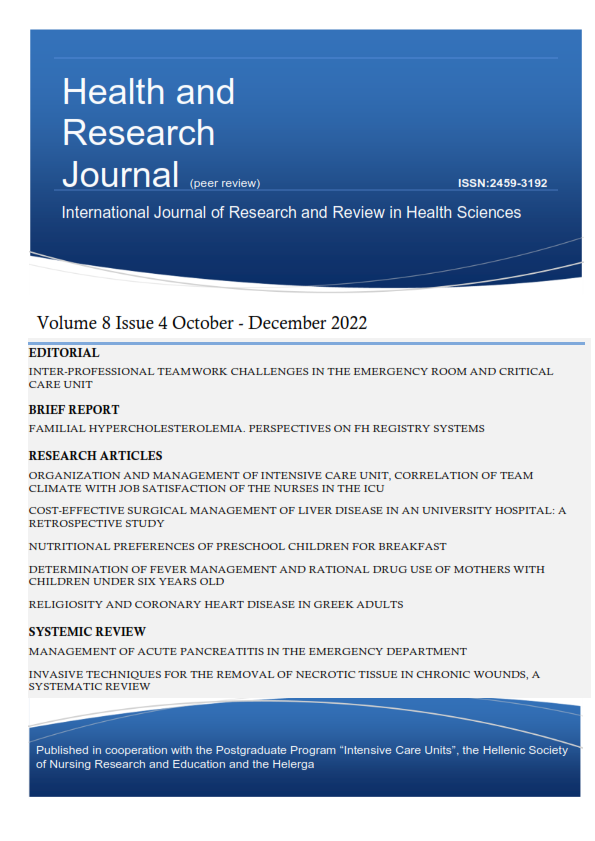The prognostic value of lactate acid in sepsis
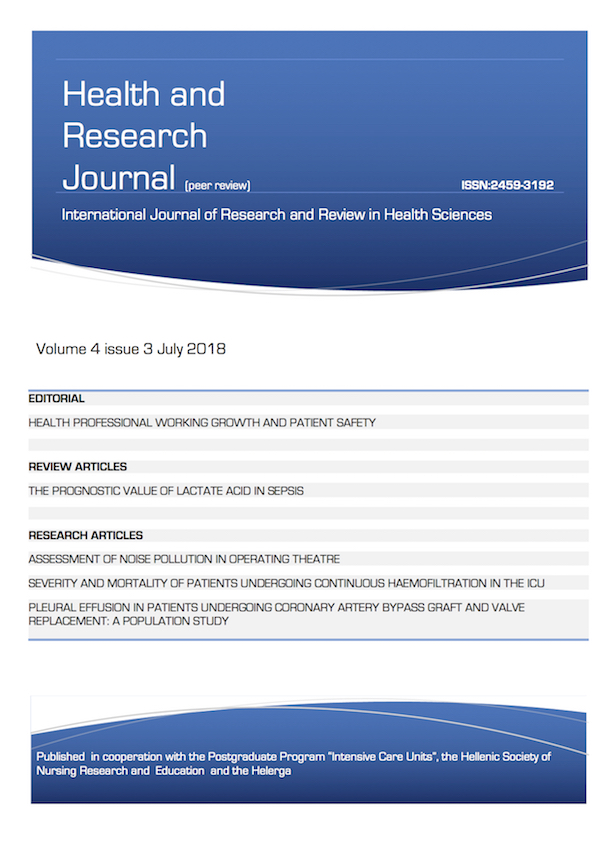
Abstract
Introduction: Lactic acid, a product of glucose metabolism, is produced rapidly when oxygen transfer to the cells is insufficient to meet their requirements.
Aim: The aim of the present systematic review was to investigate lactic acid as a prognostic marker in sepsis.
Material and Method: A search was made in the electronic databases Pubmed, Cinahl, GoogleScholar, CochraneLibrary, during the period 2010-2018. The key words used were "lactate acid", "severe sepsis", "prognostic value", "mortality." Twelve studies were included to the present review.
Results: According to the results, it was revealed that elevated lactate acid levels are directly related to mortality in clinics and ICUs. In particular, lactate acid clearance seems to be the most valid marker of prognosis. Studies that compared lactate acid levels with central venous oxygen saturation as predictors of sepsis showed that the lactate acid value predominates as a predictive marker against Central venous oxygen saturation (ScvO2).
Conclusions: Elevated lactate acid levels or low lactate clearance in the first 24-48 hours in patients with sepsis or septic shock are associated with increased morbidity and mortality in clinics and ICUs. Perhaps the measurement of lactic acid is a non-invasive parameter that helps guide the treatment of sepsis.
Article Details
- How to Cite
-
Alivanoglou, A., Marvaki, C., Toylia, G., & Vasilopoulos, G. (2018). The prognostic value of lactate acid in sepsis. Health & Research Journal, 4(3), 119–138. https://doi.org/10.12681/healthresj.19290
- Section
- Reviews
Copyright notice:
The journal "Health and Research Journal" reserves the rights for copyright of the content of the website and also the copyright of the articles published.
By virtue of their appearance in this journal, the articles are free to be used for non-commercial purposes. However, the articles cannot and must not be used in anyway, published elsewhere or modified without any reference to the author and the first publication of the article.



